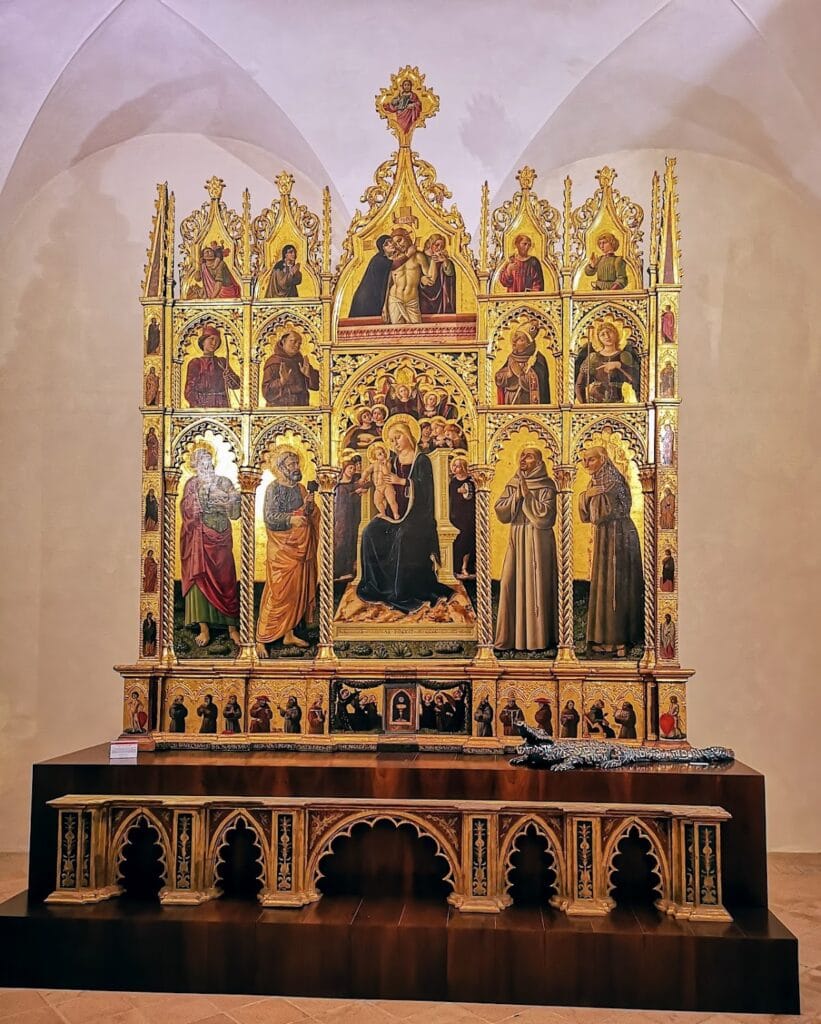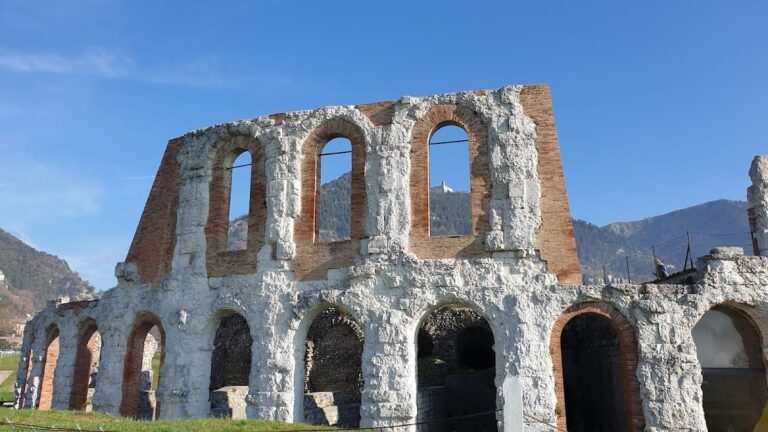Rocca Flea: A Medieval Fortress and Museum in Gualdo Tadino, Italy
Visitor Information
Google Rating: 4.5
Popularity: Low
Google Maps: View on Google Maps
Official Website: www.polomusealegualdotadino.it
Country: Italy
Civilization: Medieval European
Remains: Military
History
Rocca Flea stands on a hilltop in the town of Gualdo Tadino, Italy, originally established by the Lombard civilization during the early medieval period. Its earliest form included a sanctuary dedicated to Saint Michael the Archangel, reflecting the religious customs of the time.
The origins of the fortress can be traced back to the 8th or 9th centuries, when the Lombards built what was then known as Arx Major Terre Gualdi. Documentary records from the 12th century confirm the existence of the stronghold, which underwent significant reconstruction in 1242 under Emperor Frederick II. Notably, this rebuilding took place shortly after the town itself was rebuilt in 1237, suggesting a deliberate effort to reinforce defenses in the region.
In the mid-14th century, during a period when Perugia held control over Gualdo Tadino, the fortress was expanded with the addition of a central tower known as the Cassero, serving as a fortified keep. Further structural alterations were carried out later that century by the condottiero Biordo Michelotti, a military leader who influenced many fortifications in central Italy.
During the early 16th century, Cardinal Antonio Maria Ciocchi del Monte made the Rocca his residence between 1515 and 1533. Over time, the military function of the fortress diminished, and it was transformed into a Renaissance-style residence suited for noble families. By the 19th century, the building took on a new role as a female prison, later becoming a district prison starting in 1888.
Since 1999, the Rocca Flea no longer serves military or penal purposes but functions as the Museo Civico di Gualdo Tadino, showcasing local history and art within its historic walls.
Remains
The Rocca Flea is a fortified medieval palace that dominates the landscape from its prominent hilltop position over Gualdo Tadino. Its layout centers around the Cassero, the massive keep constructed in 1350 when Perugia governed the area, representing the core defensive structure of the fortress. This tower was built with the intent to provide strong military protection and command over the surrounding territory.
Integrated into the palace’s fabric is the remains of an older sanctuary dating to Lombard times. Dedicated to Saint Michael the Archangel, this religious site was preserved within the defensive complex, illustrating how sacred spaces and military architecture coexisted and were layered over centuries. The sanctuary is evidence of the site’s spiritual significance alongside its strategic importance.
Throughout the centuries, the Rocca Flea underwent multiple renovations that adapted its spaces to changing needs. The enduring structure seen today reflects alterations from the 13th century through the Renaissance and beyond, although specific decorative materials and construction techniques are not detailed in surviving records. The restoration efforts have made it suitable for museum exhibitions, with accessible halls on the ground and first floors.
The museum’s collections emphasize the local heritage, including displays of archaeological finds spanning from prehistoric times to the early Middle Ages. Additionally, there are notable examples of regional ceramic art, particularly lustrous ceramics, showcasing the area’s centuries-old tradition in pottery. Paintings by prominent local artists such as Matteo da Gualdo and Sano di Pietro also find space within the Rocca, preserving artistic legacies tied closely to the town and its cultural history.
The fortress today remains well-preserved, with key elements like the Cassero and adjacent areas restored and maintained, allowing visitors and scholars to appreciate the architectural and historical layers embedded in its walls.







